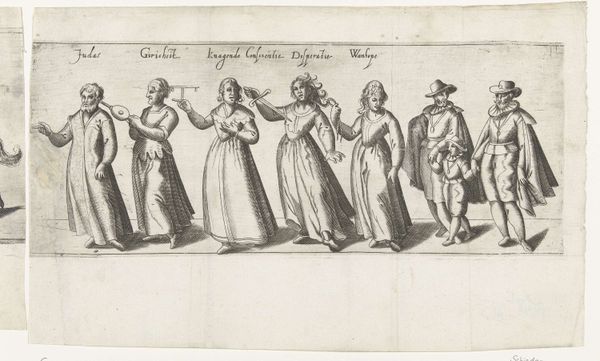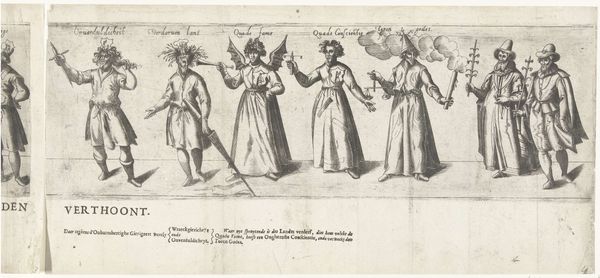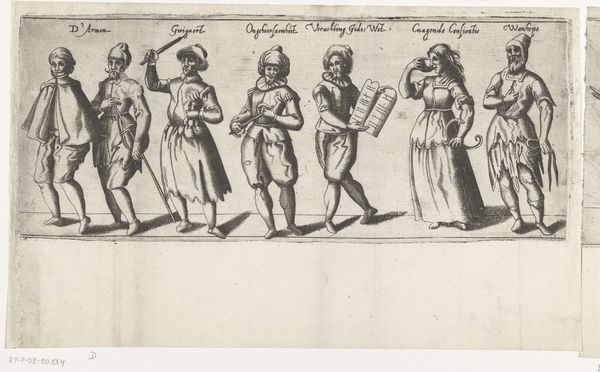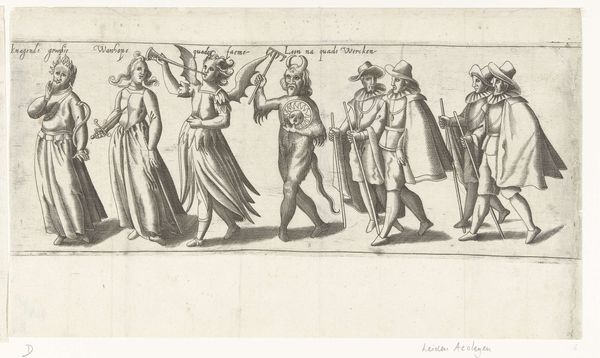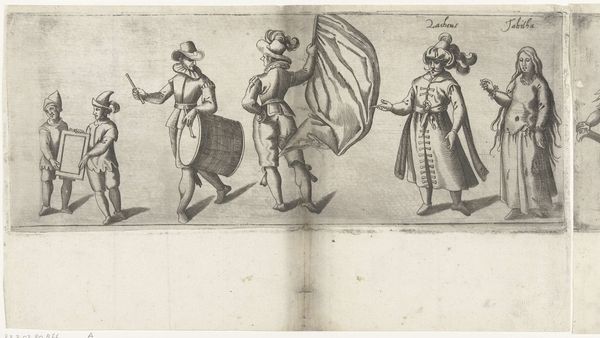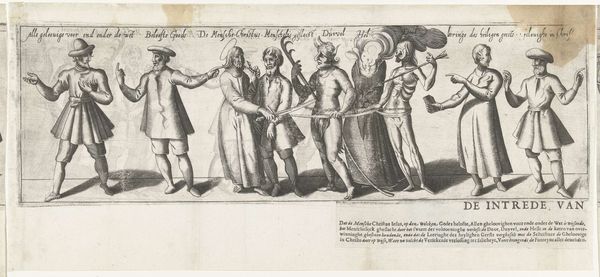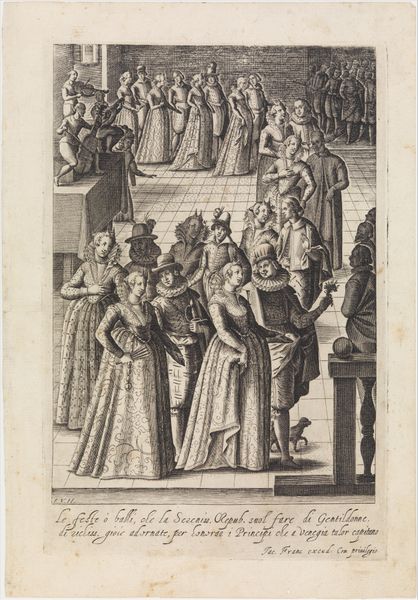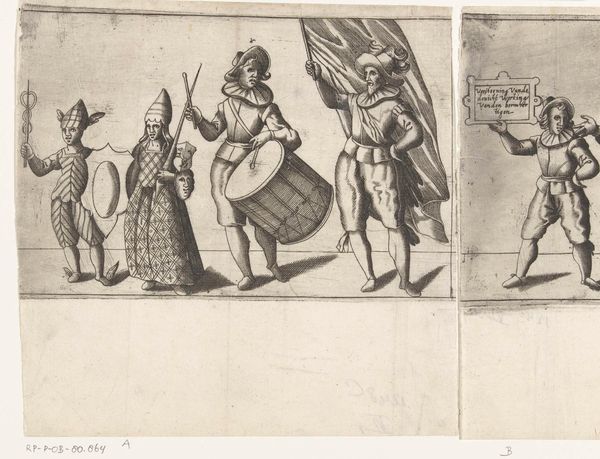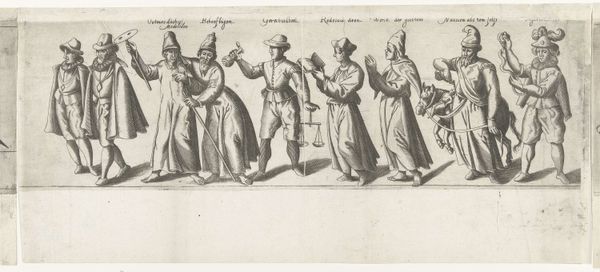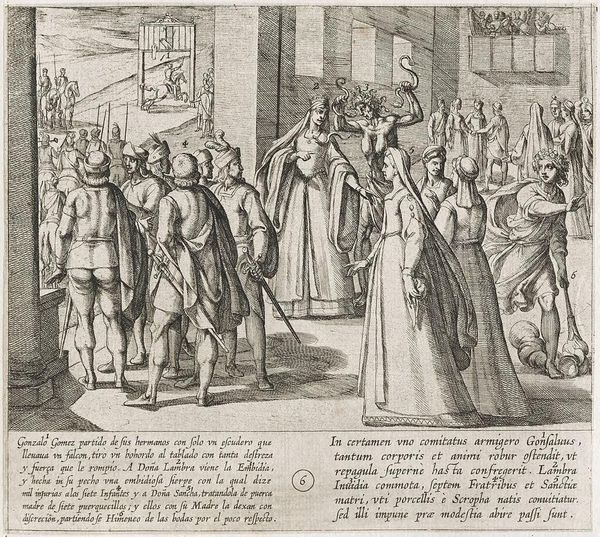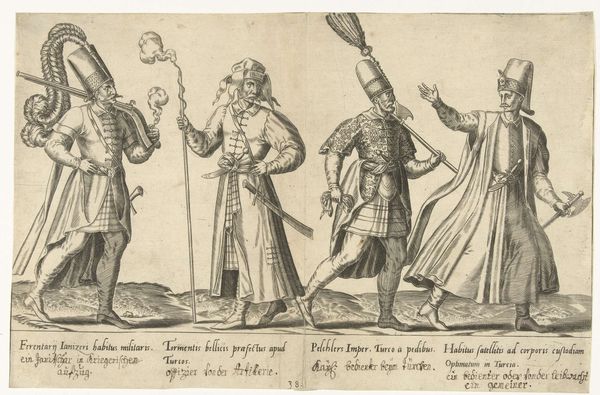
Optocht door de rederijkerskamer De Witte Ackoleyen uit Leiden (derde deel), 1607 1607
0:00
0:00
anonymous
Rijksmuseum
drawing, print, ink, engraving
#
drawing
#
allegory
#
narrative-art
#
baroque
# print
#
figuration
#
ink
#
history-painting
#
engraving
Dimensions: height 198 mm, width 365 mm
Copyright: Rijks Museum: Open Domain
Curator: Immediately striking—like figures from a dream frozen in mid-procession. There’s an antique quality, despite the drawing. Editor: And an orderly feel that's almost ironic given the era of immense socio-political and religious upheaval in which it was produced. I’m looking at “Procession of the Rhetoric Chamber De Witte Ackoleyen from Leiden (third part)," an engraving from 1607. Curator: Note how the anonymous artist arranges a frieze-like gathering of eight figures, each distinctly labelled above in elegant calligraphy. What resonates are the recurring staffs and interconnectedness between figures achieved via those tenuous ropes, suggesting a linked cultural inheritance. Editor: Right, cultural inheritance carefully curated. Rhetoric chambers played vital roles in shaping public opinion. Examining these figures in procession reveals layers of power, knowledge, and, perhaps, control. It depicts members of a rhetoric society engaged in symbolic enactment, participating in the civic discourse of the era. The drawing captures how identity and collective purpose intertwine, mirroring community ideals of harmony, order, and erudition amidst broader religious conflicts during the Dutch Revolt. Curator: Look at each member's distinguishing characteristics – garb, posture, props. "Cranckheyt" – illness or infirmity – starts our left, with crutches and lantern representing spiritual waning. The angelic "Gheestelycke Hope" is optimism. Do you find that order intentional? Are they the eight virtues? Editor: In that specific order, it does look deliberate; but whether "virtues", precisely, is more difficult to know outside its socio-historic moment. Rather than singular allegories, they stand more pointedly as reflections on the society’s ethical principles. This artwork prompts reflection upon who's involved, who’s not. Why were some perspectives amplified over others? The piece isn't only aesthetically striking—it serves as a time capsule. Curator: Definitely a capsule, carrying complex threads of moral, intellectual, and political beliefs across eras. Editor: Ultimately, "Procession of the Rhetoric Chamber De Witte Ackoleyen from Leiden (third part)" offers much insight into Dutch Golden Age social dynamics. Curator: A rare view of how symbols acted as connective tissues across centuries. Editor: Absolutely, and these visual allegories prompt dialogues relevant for us now as we re-evaluate concepts of equity and collective purpose in rapidly changing communities.
Comments
No comments
Be the first to comment and join the conversation on the ultimate creative platform.
